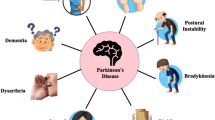Abstract
Early detection of Parkinson’s disease is imperative for efficient treatment and managing of the disease in a patient. The detection of the disease is not perfect as until now, it is having mostly been done manually by the humans. Since human observation is prone to mistakes and can generate inconsistency, there is a need to create a program that is able to improve upon the current diagnosis and detection of the disease with better accuracy. To make such a program, for this paper, a detection model is proposed that utilizes SPECT images of healthy and diseased persons to find the affected region of the brain, this region helps determine the region of interest (ROI) for the study. The model uses artificial neural network and image processing to accomplish its main task of detection. The area values of the ROI are then fed into the model which aims to calculate the pattern of the diseased region to determine the extent of Parkinson’s disease, and whether the brain is healthy or not. This simple but efficient ANN model classifies the subjects with and without PD, with an accuracy of 93%, sensitivity of 100%, and specificity of 86%. The ANN model undergoes constant improvement and fed larger datasets over time to improve the accuracy of the model and achieve a better performance than any previously available modes of detection. Hence, the proposed system has the potential to aid the doctors and nurses in the medical field of neurobiology and can be practically implemented to improve the diagnosis of Parkinson’s disease.
Access this chapter
Tax calculation will be finalised at checkout
Purchases are for personal use only
Similar content being viewed by others
References
Amboni M, Stocchi F, Abbruzzese G, Morgante L, Onofrj M, Ruggieri S (2015) Prevalence and associated features of self-reported freezing of gait in Parkinson disease: the DEEP FOG study. Park Relat Disord 21(6):644–649
Bächlin M, Plotnik M, Roggen D, Maidan I, Hausdorff JM, Giladi N (2010) Wearable assistant for Parkinsons disease patients with the freezing of gait symptom. IEEE Trans Inf Technol Biomed 14(2):436–446
Zach H, Janssen AM, Snijders AH, Delval A, Ferraye MU, Auff E (2015) Identifying freezing of gait in Parkinson’s disease during freezing provoking tasks using waist-mounted accelerometry. Park Relat Disord 21(11):1362–1366
Ahlrichs C, Samà A, Lawo M, Cabestany J, Rodrígues-Martín D, Pérez-Lopéz C (2016) Detecting freezing of gait with a tri-axial accelerometer in Parkinson’s disease patients. Med Biol Eng Comput 54(1):223–233
Rodríguez-Martín D, Samà A, Pérez-Lopéz C, Català A, Arostegui JMM, Cbestany J (2017) Home detection of freezing of gait using Support Vector Machines through a single waist-worn triaxial accelerometer. PLoS One 12(2):1–26
Samà A, Rodríguez-Martín D, Pérez-Lopéz C, Català A, Alcaine S, Mestre B (2018) Determining the optimal features in freezing of gait detection through a single waist accelerometer in home environments. Pattern Recognit Lett 105:135–143
San-Segundo R, Navarro-Hellín H, Torres-Sánchez R, Hodgins J, La FD (2019) Torre: Increasing robustness in the detection of freezing of gait in Parkinson’s disease. Electron 8(2):1–14
Sigcha L, Costa N, Pavón I, Costa S, Arezes P, López JM (2020) Deep learning approaches for detecting freezing of gait in Parkinson’s disease patients through on-body acceleration sensors. Sensors 20(7)
Hoehn MM, Yahr MD (2001) Parkinsonism: onset progression and mortality. Neurology 57(10):427–442
Moore ST, Macdougall HG, Ondo WG (2008) Ambulatory monitoring of freezing of gait in Parkinson’s disease. J Neurosci Methods 167(2):340–348
Author information
Authors and Affiliations
Corresponding author
Editor information
Editors and Affiliations
Rights and permissions
Copyright information
© 2023 The Author(s), under exclusive license to Springer Nature Singapore Pte Ltd.
About this paper
Cite this paper
Bhakar, S., Verma, S.S. (2023). Parkinson’s Disease Detection Through Deep Learning Model. In: Tuba, M., Akashe, S., Joshi, A. (eds) ICT Systems and Sustainability. Lecture Notes in Networks and Systems, vol 516. Springer, Singapore. https://doi.org/10.1007/978-981-19-5221-0_10
Download citation
DOI: https://doi.org/10.1007/978-981-19-5221-0_10
Published:
Publisher Name: Springer, Singapore
Print ISBN: 978-981-19-5220-3
Online ISBN: 978-981-19-5221-0
eBook Packages: Intelligent Technologies and RoboticsIntelligent Technologies and Robotics (R0)




